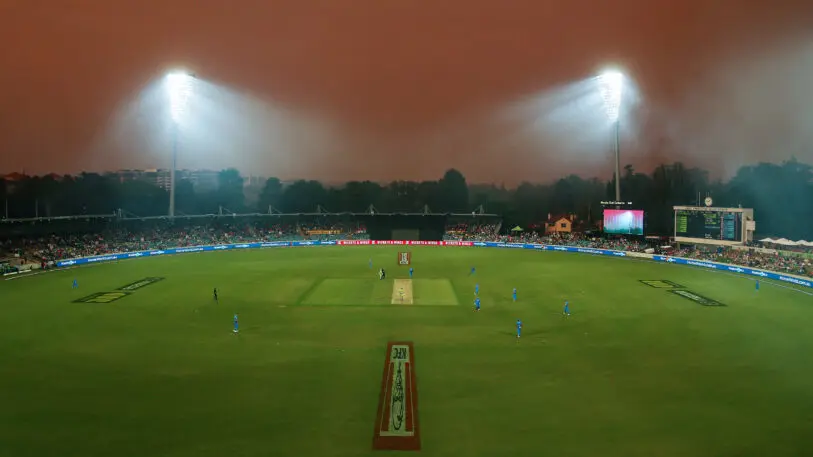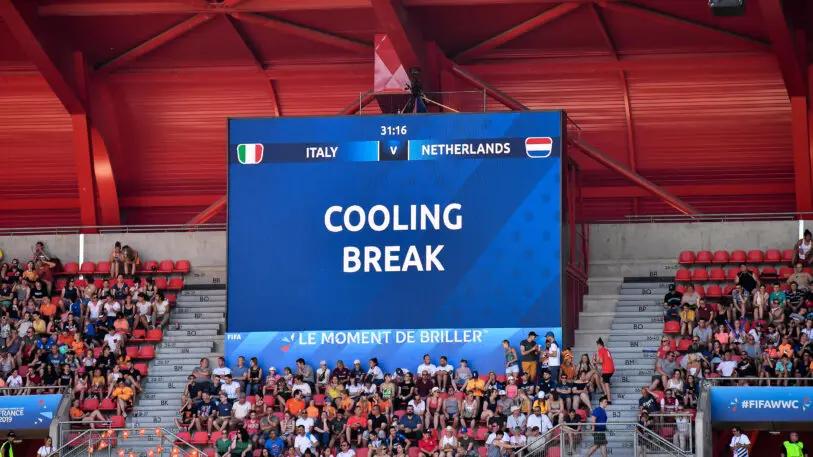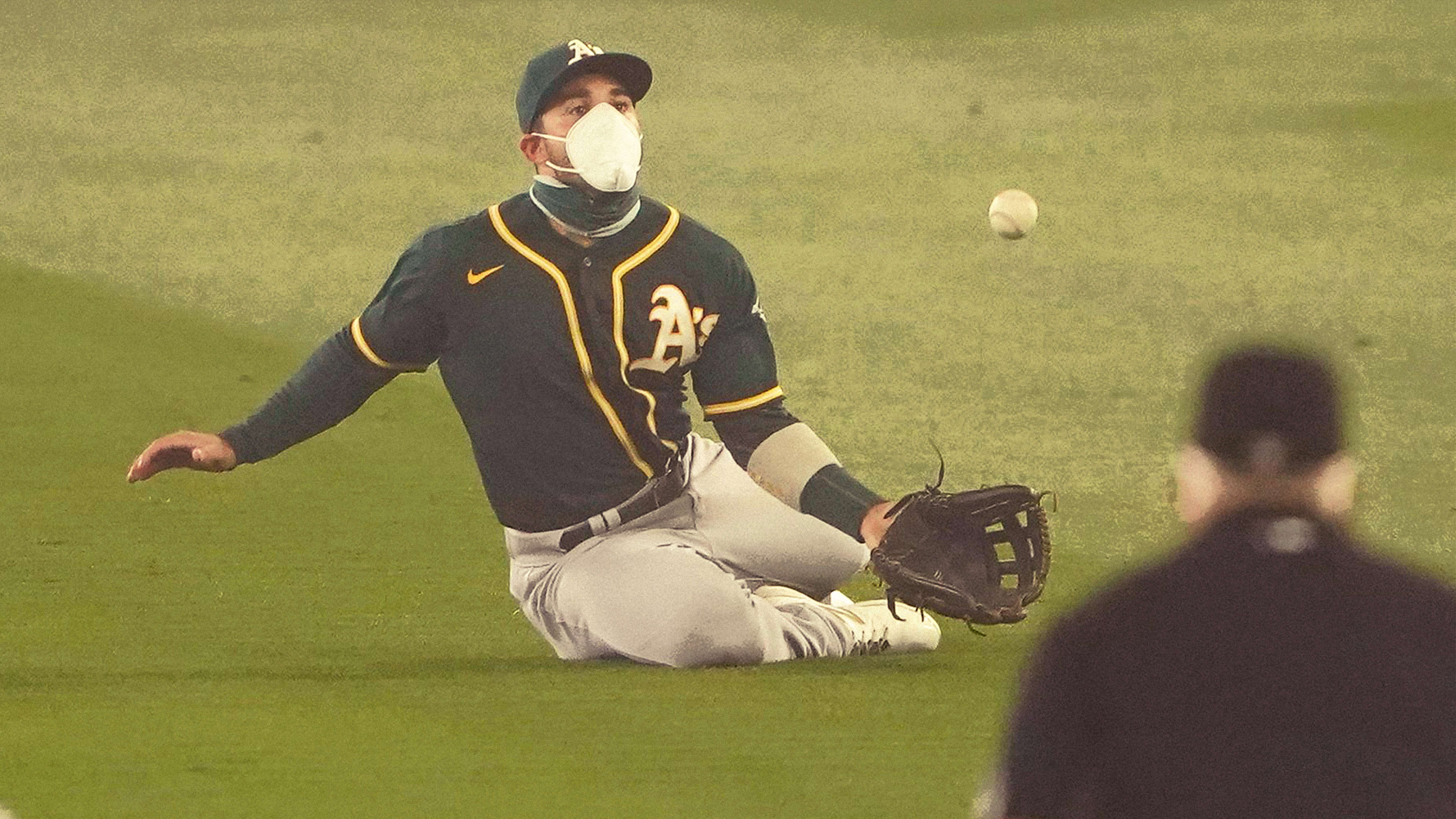Watching sports in 2020 is an unusual experience. Supporters didn’t get to see the Olympics in 2020, but they saw a basketball “bubble” with virtual fans and a Premier League with fake cheering. While the coronavirus has stalled and altered sports, a report on sports and climate from this summer warns: “Yet devastating as this has been, something even more problematic is waiting in the wings for the sporting circus.” That’s the climate crisis.
Before the Tokyo Olympics were postponed due to the pandemic, organizers finally decided to move the marathon event from the Japanese capital to the cooler Sapporo, because Tokyo heat in summer 2018 reached a sweltering 106 degrees Fahrenheit. That’s just one example that’s exposed how climate is changing the way sports are being consumed, both for players of local, community sports, and spectators of the global leagues. High temperatures and lack of snowfall are threatening skiing, fires are causing poor health for cricket players in Australia (and baseball players in California), and rising sea levels are flooding golf courses.
“If you’re ever going to have a conversation and raise awareness about the problem of climate change, you have to talk about the things which matter to people,” says Andrew Simms, a longtime environmental researcher based in London. “And, of course, the number-one pastime globally is sport.”

“Talking about things in abstract or esoteric or theoretical terms is not a good way to create change in the world,” Simms says, in the same way that discussing abstract monetary theories is likely not going to convince people about the threat of economic globalization as much as the tangible effect of big-box stores on Main Street. Similarly, sports matter to people.
That conjecture gave rise to the alliance’s report, authored by British sports journalist David Goldblatt. It notes how specific sports have been physically affected by climate change, as playing fields and grounds are devastated by rising temperatures. In the 2010 Winter Olympics, the Vancouver organizers said that “the warmest weather on record . . . challenged our ability to prepare fields of play for athletes in the venues at Cypress Mountains.” But four years later, athletes were even more affected in Sochi, as the courses were bare or sludgy, to the point that many competitors couldn’t finish their races. The Sochi Paralympics generated six times more injuries than Vancouver’s.

Sports, though, may be able to partially help themselves recover; while sporting events are victims of climate change, they also have high carbon footprints. The 2016 Rio Olympics released 3.6 million tons of carbon dioxide, and the 2018 Russia World Cup 2.16 million (and those calculations exclude the impact of constructing multiple new stadiums). And, while other industries have been targeted as culprits, sports have largely gotten off lightly. “There has been no shortage in environmental slogans in the sports world since [the Sydney Olympics],” Goldblatt says in the report, “but there has been precious little action, especially amongst the governing bodies of sport and the leading professional and commercial leagues.”
While other sectors and governments need to make serious changes to reach the goals set out by the Paris Agreement, sports leagues, clubs, and organizing bodies can also do their part. “Actually, [sport has] got a disproportionately large responsibility because of the leadership position it has,” Simms says.
The U.N.’s Sport for Climate Action Framework, from 2016, intends to encourage sporting entities to help reach the Paris goals. But only some bodies have signed the pledge: FIFA, UEFA, IOC, NFL, NBA have; NHL and MLB haven’t. It’s been signed by the global Olympic federations of only tae kwon do, wrestling, and sailing for summer, and ice hockey and skiing in winter—”which makes one wonder what the people in charge of luge and bobsleigh think they are going to be sliding on in the future,” Goldblatt writes.
But the pledge isn’t enough, Simms says, because the U.N.’s framework lacks intricate strategies, hard targets, and urgency. He says offsetting emissions—a “get out of carbon jail free card”—is also not as effective as slashing carbon emissions. One route could be for leagues to remove fossil fuel and high-carbon lifestyle sponsors such as airlines, petrochemical companies, and SUV manufacturers. The Bundesliga, the top German soccer league, has shown how individual teams can make an impact: Bayern Leverkusen uses 100% clean energy, only single-use plastics, and well water for irrigation.
But it’s a small team in England, Forest Green Rovers, that’s leading the charge, as the world’s first U.N.-certified carbon-free soccer club, which boasts 100% renewable energy, rainwater recycling, and vegan-only food—and has planning permission to build a new carbon-free, wooden stadium. “Now, you’ve got the other more elite clubs and top-end clubs running to catch up,” Simms says.
Due to the restrictions during the coronavirus, carbon emissions from sports in 2020 have probably plummeted, as leagues have cut back on travel, stadium use, and halftime razzamatazz. And the report suggests that there are lessons from the pandemic that can cross over into the climate crisis. “Take the science seriously and assume the worst-case scenario can happen, act now not later, and act radically,” Goldblatt writes. Echoing Joe Biden’s campaign catchphrase, Simms says now should be the time for thinking about ways in which sports can reset, by “building back better” post-pandemic.
Recognize your brand’s excellence by applying to this year’s Brands That Matter Awards before the early-rate deadline, May 3.
